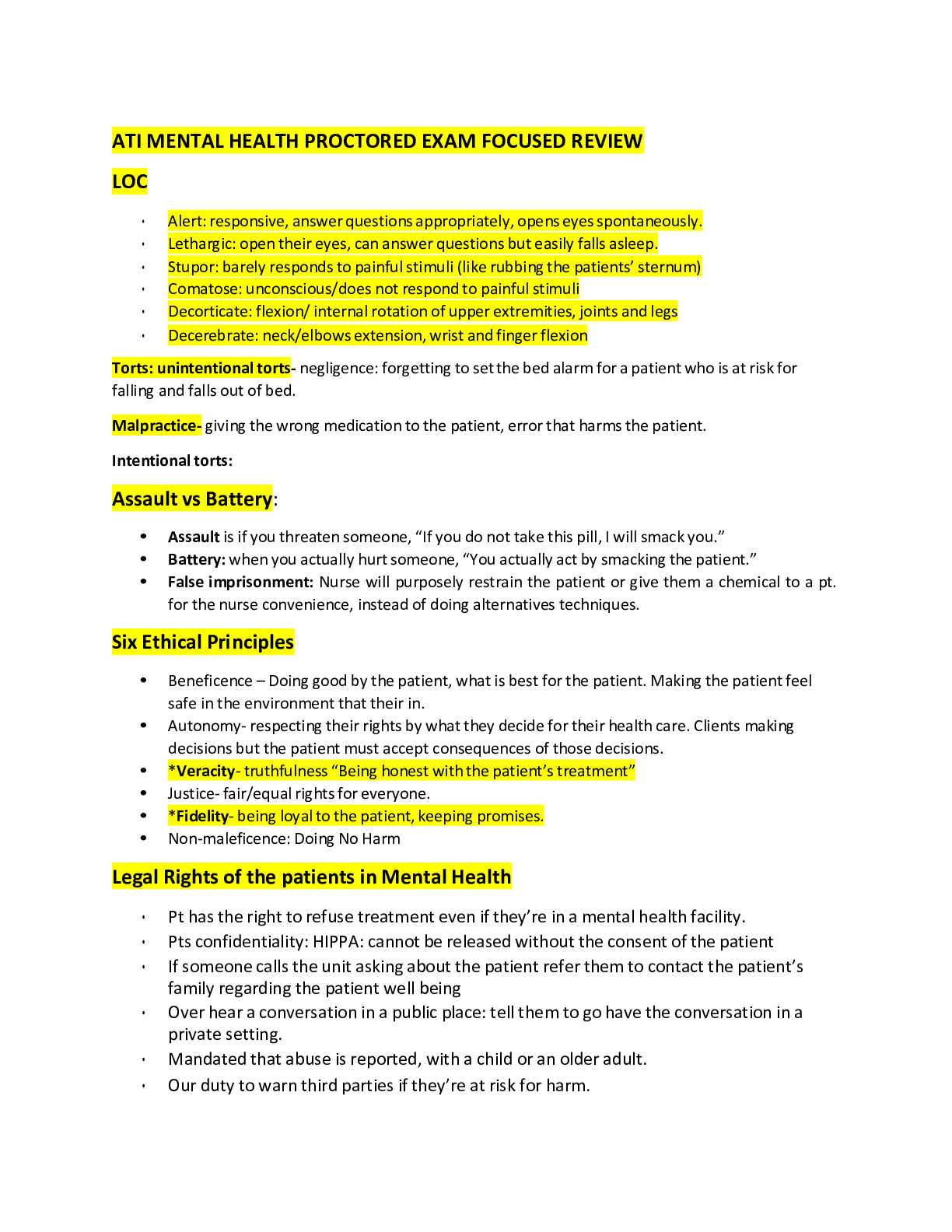Health Care > EXAM > ATI Mental Health Proctored Exam Review (All)
ATI Mental Health Proctored Exam Review
Document Content and Description Below
ATI Mental Health Proctored Exam Review A charge nurse is discussing mental status exams with a newly licensed nurse. Which of the following statements by the newly licensed nurse indicates an unders... tanding of the teaching? (Select all that apply). A. "To assess cognitive ability, I should ask the client to count backward by sevens." B. "To assess affect, I should observe the client's facial expression. C. "To assess language ability, I should instruct the client to write a sentence." D. "To assess remote memory, I should have the client repeat a list of objects." E. "To assess the client's abstract thinking, I should ask the client to identify our most recent presidents." A nurse is planning care for a client who has a mental health disorder. Which of the following actions should the nurse include as a psychobiological intervention? A. Assist the client with systematic desensitization therapy. B. Teach the client appropriate coping mechanisms C. Assess the client for comorbid health conditions. D. Monitor the client for adverse effects of the medications. A nurse in an outpatient mental health clinic is preparing to conduct an initial client interview. When conducting the interview, which of the following actions should the nurse identify as the priority? A. Coordinate holistic care with social services B. Identify the client's perception of her mental health status. C. Include the client's family in the interview. D. Teach the client about her current mental health disorder. A nurse is told during change of shift report that a client is stuporous. When assessing the client, which of the following findings should the nurse expect? A. The client arouses briefly in response to a sternal rub. B. The client has a glasgow coma scale score less than 7. C. The client exhibits decorticate rigidity. D. The client is alert but disoriented to time and place. A nurse is planning a peer group discussion about the DSM-5. Which of the following information is appropriate to include in the discussion? (Select all that apply) A. The DSM-5 includes client education handouts for mental health disorders. B. The DSM-5 establishes diagnostic criteria for individual mental health disorders. C. The DSM-5 indicates recommended pharmacological treatment for mental health disorders. D. The DSM-5 assists nurses in planning care for client's who have mental health disorders. E. The DSM-5 indicates expected assessment findings of mental health disorders. A nurse in an emergency mental health facility is caring for a group of clients. The nurse should identify that which of the following clients requires a temporary emergency admission? A. A client who has schizophrenia with delusions of grandeur B. A client who has manifestations of depression and attempted suicide a year ago C. A client who has borderline personality disorder and assaulted a homeless man with a metal rod D. A client who has bipolar disorder and paces quickly around the room while talking to himself A nurse decides to put a client who has a psychotic disorder in seclusion overnight because the unit is very short-staffed, and the client frequently fights with other clients. The nurse's actions are an example of which of the following torts? A. Invasion of privacy B. False imprisonment C. Assault D. Battery A client tells a nurse, "Don't tell anyone but I hid a sharp knife under my mattress in order to protect myself from my roommate, who is always yelling at me and threatening me." Which of the following actions should the nurse take? A. Keep the client's communication confidential, but talk to the client daily, using therapeutic communication to convince him to admit to hiding the knife B. Keep the client's communication confidential, but watch the client and his roommate closely. C. Tell the client that this must be reported to the health care team because it concerns the health and safety of the client and others. D. Report the incident to the health care team, but do not inform the client of the intention to do so. A nurse is caring for a client who is in mechanical restraints. Which of the following statements should the nurse include in the documentation? (Select all that apply) A. "Client ate most of his breakfast." B. "Client was offered 8 oz of water every hr." C. "Client shouted obscenities at assistive personnel." D. "Client received chlorpromazine 15 mg by mouth at 1000." E. "Client acted out after lunch." A nurse hears a newly licensed nurse discussing a client's hallucinations in the hallway with another nurse. Which of the following actions should the nurse take first? A. Notify the nurse manager. B. Tell the nurse to stop discussing the behavior. C. Provide an in-service program about confidentiality. D. Complete an incident report. A nurse is caring for the parents of a child who has demonstrated changes in behavior and mood. When the mother of the child asks the nurse for reassurance about her son's condition, which of the following responses should the nurse make? A. "I think your son is getting better. What have you noticed." B. "I'm sure everything will be okay. It just takes time to heal." C. "I'm not sure whats wrong. Have you asked the doctor about your concerns?" D. "I understand you're concerned. Let's discuss what concerns you specifically." A nurse is caring for a client who smokes and has lung cancer. The client reports, "I'm coughing because I have that cold that everyone has been getting." The nurse should identify that the client is using which of the following defense mechanisms? A. Reaction formation B. Denial C. Displacement D. Sublimation A nurse is providing preoperative teaching for a client who was just informed that she requires emergency surgery. The client has a respiratory rate 30/min and says, "This is difficult to comprehend. I feel shaky and nervous." The nurse should identify that the client is experiencing which of the following levels of anxiety? A. Mild B. Moderate C. Severe D. Panic A nurse is caring for a client who is experiencing moderate anxiety. Which of the following actions should the nurse take when trying to give necessary information to the client? (Select all that apply.) A. Reassure the client that everything will be okay. B. Discuss prior use of coping mechanisms with the client. C. Ignore the client's anxiety so that she will not be embarrassed. D. Demonstrate a calm manner while using simple and clear directions. E. Gather information from the client using closed-ended questions. D. Demonstrate a calm manner while using simple and clear directions. A nurse is talking with a client who is at risk for suicide following the death of his spouse. Which of the following statements should the nurse make? A. "I feel very sorry for the loneliness you must be experiencing." B. "Suicide is not the appropriate way to cope with loss." C. "Losing someone close to you must be very upsetting." D. "I know how difficult it is to lose a loved one." A charge nurse is discussing the characteristics of a nurse-client relationship with a newly licensed nurse. Which of the following characteristics should the nurse include in the discussion? (Select all that apply) A. The needs of both participants are met. B. An emotional commitment exists between the participants. C. It is goal-directed. D. Behavioral change is encouraged. E. A termination date is established. D. Behavioral change is encouraged. E. A termination date is established. A nurse is in the working phase of a therapeutic relationship with a client who has methamphetamine use disorder. Which of the following actions indicates transference behavior? A. The client asks the nurse whether she will go out to dinner with him. B. The client accuses the nurses of telling him what to do just like his ex-girlfriend. C. The client reminds the nurse of a friend who died from a substance overdose. D. The client becomes angry and threatens to harm himself. A nurse is planning care for the termination phase of a nurse-client relationship. Which of the following actions should the nurse include in the plan of care? A. Discussing ways to use new behaviors B. Practicing new problem-solving skills C. Developing goals D. Establishing boundaries A nurse is orienting a new client to a mental health unit. When explaining the unit's community meetings, which of the following statements should the nurse make? A. "You and a group of other clients will meet to discuss your treatment plans. B. "Community meetings have a specific agenda that is established by staff. C. "You and the other clients will meet with staff to discuss common problems. D. "Community meetings are an excellent opportunity to explore your personal mental health issues." A nurse is caring several clients who are attending community-based mental health programs. Which of the following clients should the nurse plan to visit first? A. A client who recently burned her arm while using a hot iron at home. B. A client who requests that her antipsychotic medication be changed due to some new adverse effects. C. A client who says he is hearing a voice that tells him he is not worth living anymore. D. A client who tells the nurse he experienced manifestations of severe anxiety before and during a job interview. A community mental health nurse is planning care to address the issue of depression among older adult clients in the community. Which of the following interventions should the nurse plan as a method of tertiary prevention? A. Educating clients on health promotion techniques to reduce the risk of depression B. Performing screenings for depression at community health programs C. Establishing rehabilitation programs to decrease the effects of depression D. Providing support groups for clients at risk for depression C. Establishing rehabilitation programs to decrease the effects of depression A nurse is working in a community mental health facility. Which of the following services does this type of program provide? (Select all that apply) A. Educational groups B. Medication dispensing programs C. Individual counseling programs D. Detoxification programs E. Family therapy A. Educational groups B. Medication dispensing programs C. Individual counseling programs E. Family therapy A nurse in an acute mental health facility is assisting with discharge planning for a client who has a severe mental illness and requires supervision much of the time. The client's wife works all day but is home by late afternoon. Which of the following strategies should the nurse suggest as appropriate follow-up care? A. Receiving daily care from a home health aide B. Having a weekly visit from a nurse case worker C. Attending a partial hospitalization program D. Visiting a community mental health center on a daily basis C. Attending a partial hospitalization program A nurse is caring for a group of clients. Which of the following clients should a nurse consider for referral to an assertive community treatment (ACT) group? A. A client in an cute care mental health facility who has fallen several times while running down the hallway B. A client who lives at home and keeps "forgetting" to come in for his monthly antipsychotic injection for schizophrenia C. A client in a day treatment program who says he is becoming more anxious during group therapy D. A client in a weekly grief support group who says she still misses her deceased husband who has been dead for 3 months B. A client who loves at home and keeps "forgetting" to come in for his monthly antipsychotic injection for schizophrenia A nurse is teaching a client who has an anxiety disorder and is scheduled to begin classical psychoanalysis. Which of the following client statements indicates an understanding of this form of therapy? A. "Even if my anxiety improves, I will need to continue this therapy for 6 weeks. B. "The therapist will focus on my past relationships during our sessions." C. "Psychoanalysis will help me reduce my anxiety by changing my behaviors." D. "This therapy will address my conscious feelings about stressful experiences." B. "The therapist will focus on my past relationships during our sessions." A nurse is discussing free association as a therapeutic tool with a client who has major depressive disorder. Which of the following client statements indicates understanding of this technique? A. "I will write down my dreams as soon as I wake up." B. "I may begin to associate my therapist with important people in my life." C. "I can learn to express myself in a nonaggressive manner." D. "I should say the first thing that comes to my mind." D. "I should say the first thing that comes to my mind." 27. A nurse is preparing to implement cognitive reframing techniques for a client who has an anxiety disorder. Which of the following techniques should the nurse include in the plan of care? (Select all that apply) A. Priority restructuring B. Monitoring thoughts C. Diaphragmatic breathing D. Journal keeping E. Meditation A. Priority restructuring B. Monitoring thoughts D. Journal keeping A nurse is caring for a client who has a new prescription for disulfiram for treatment of alcohol use disorder. The nurse informs the client that this medication can cause nausea and vomiting if he drinks alcohol. Which of the following types of treatment is this method an example? A. Aversion therapy B. Flooding C. Biofeedback D. Dialectical behavior therapy [Show More]
Last updated: 1 year ago
Preview 1 out of 46 pages
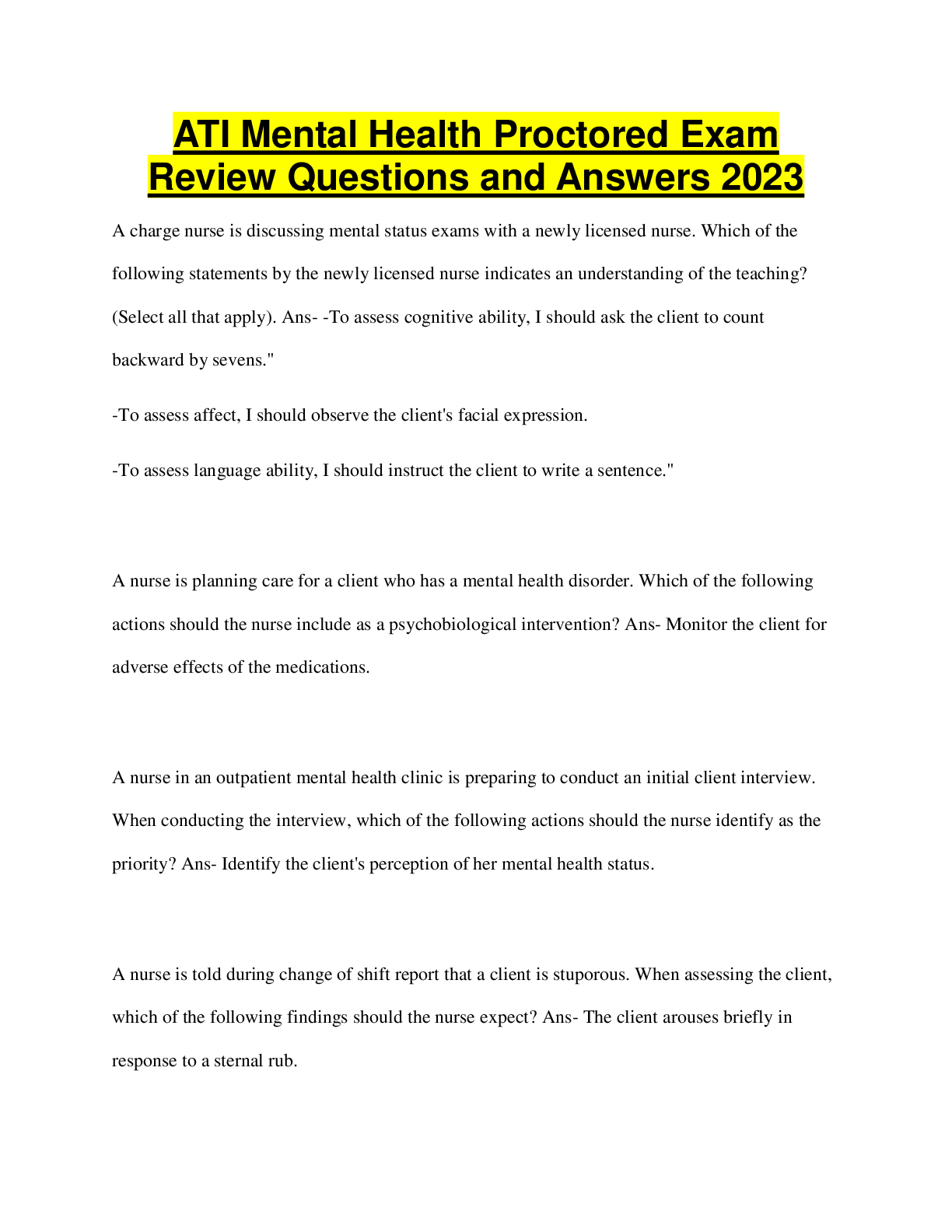
Reviews( 0 )
Document information
Connected school, study & course
About the document
Uploaded On
Apr 21, 2022
Number of pages
46
Written in
Additional information
This document has been written for:
Uploaded
Apr 21, 2022
Downloads
0
Views
197

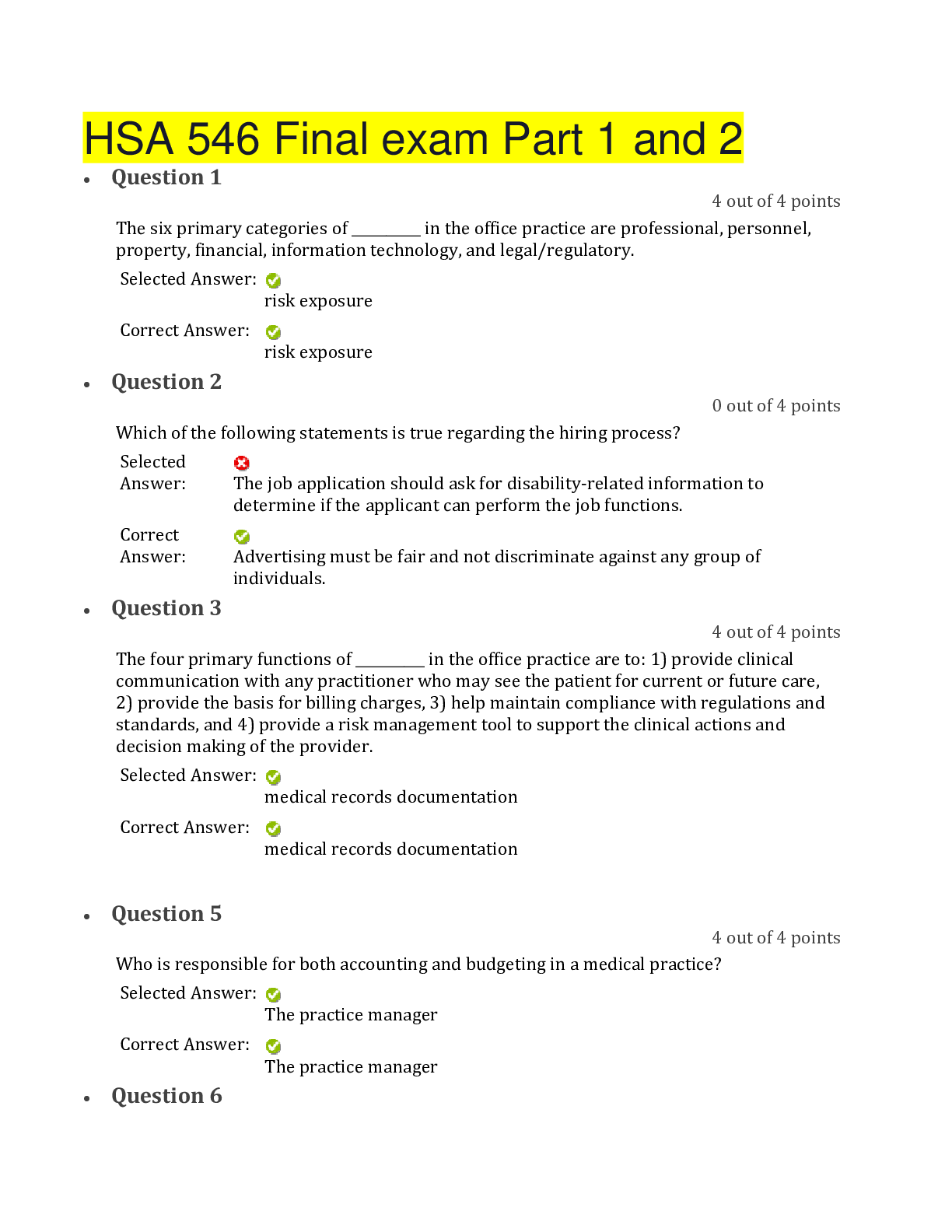



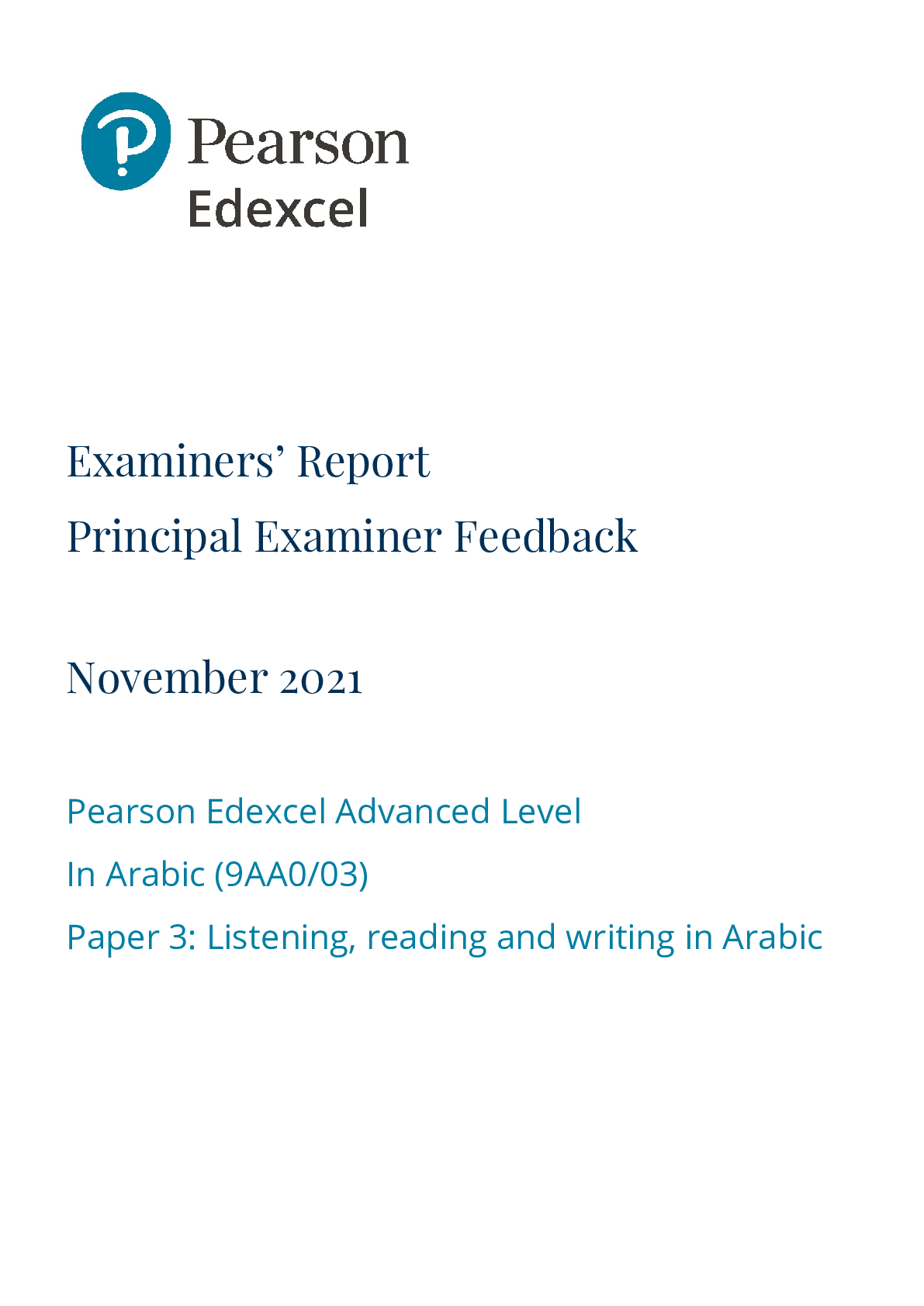
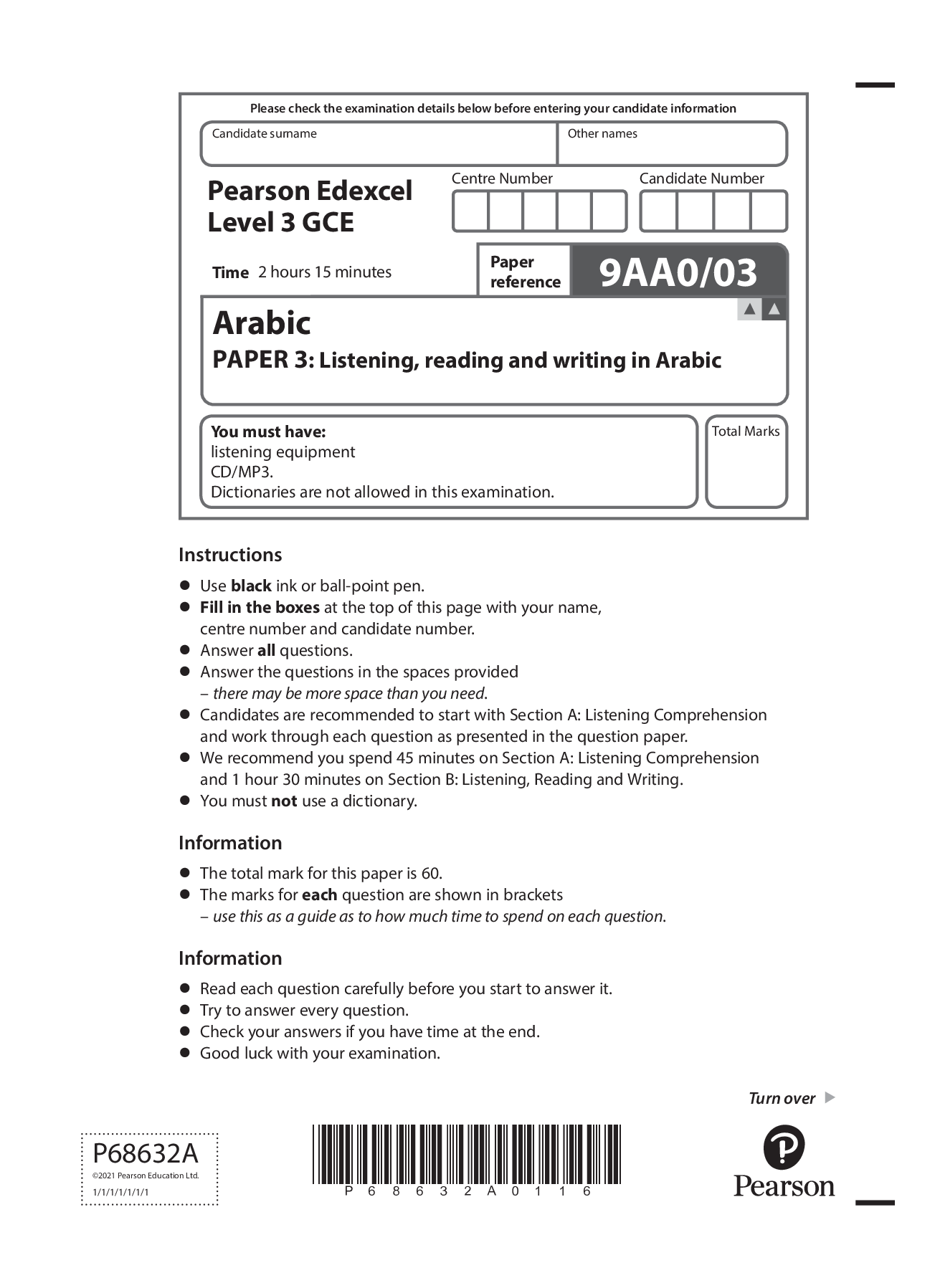

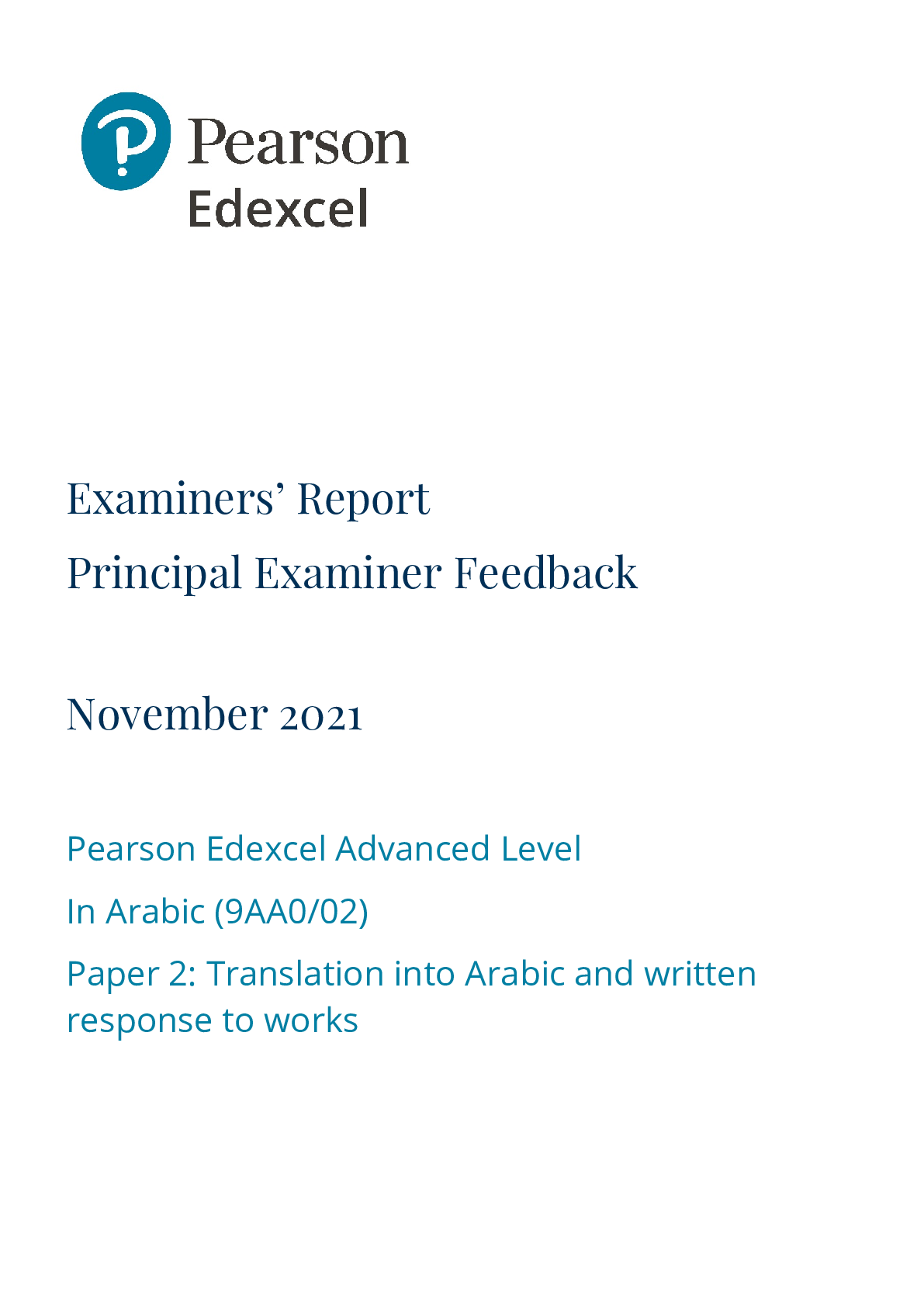
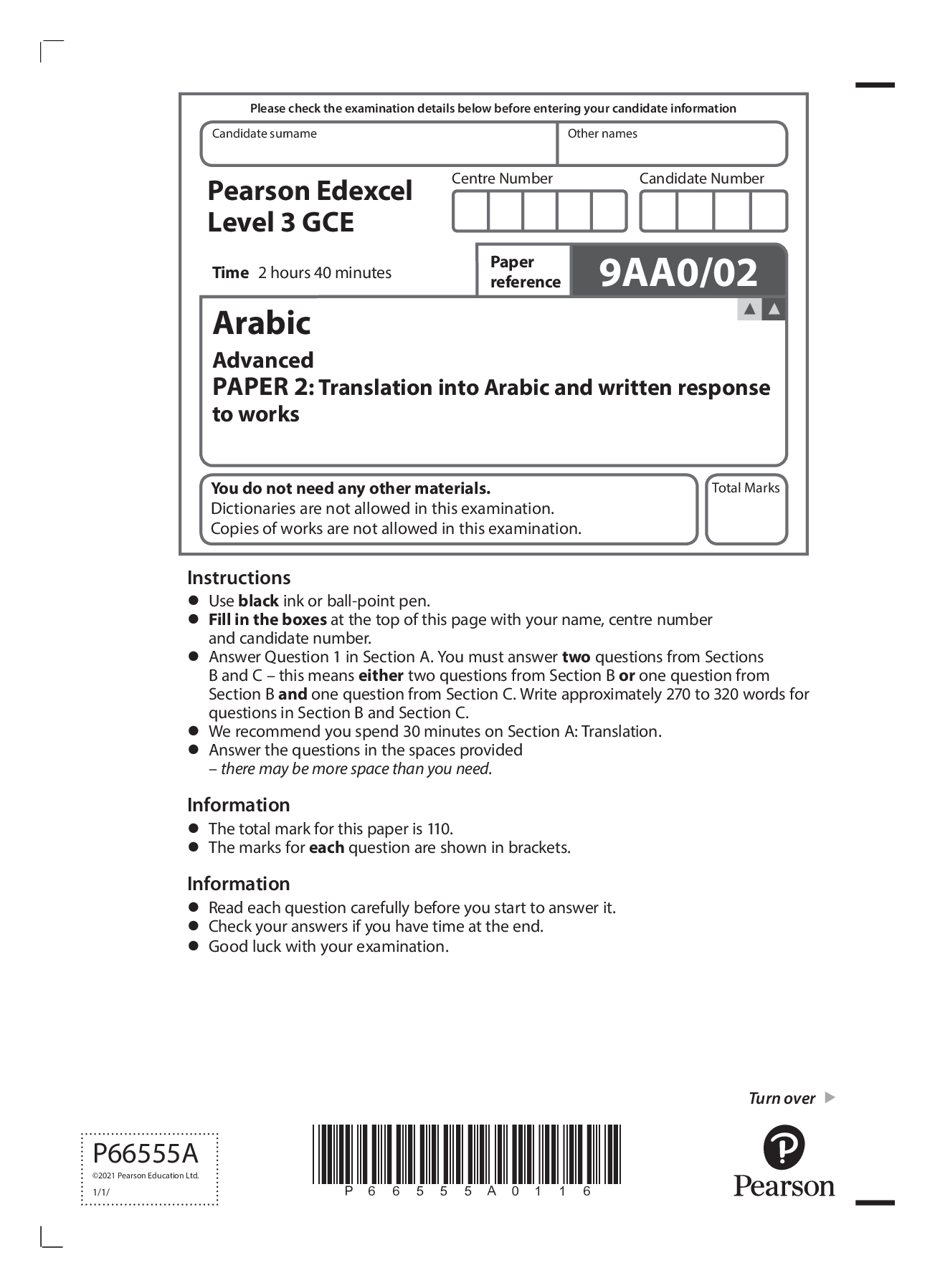


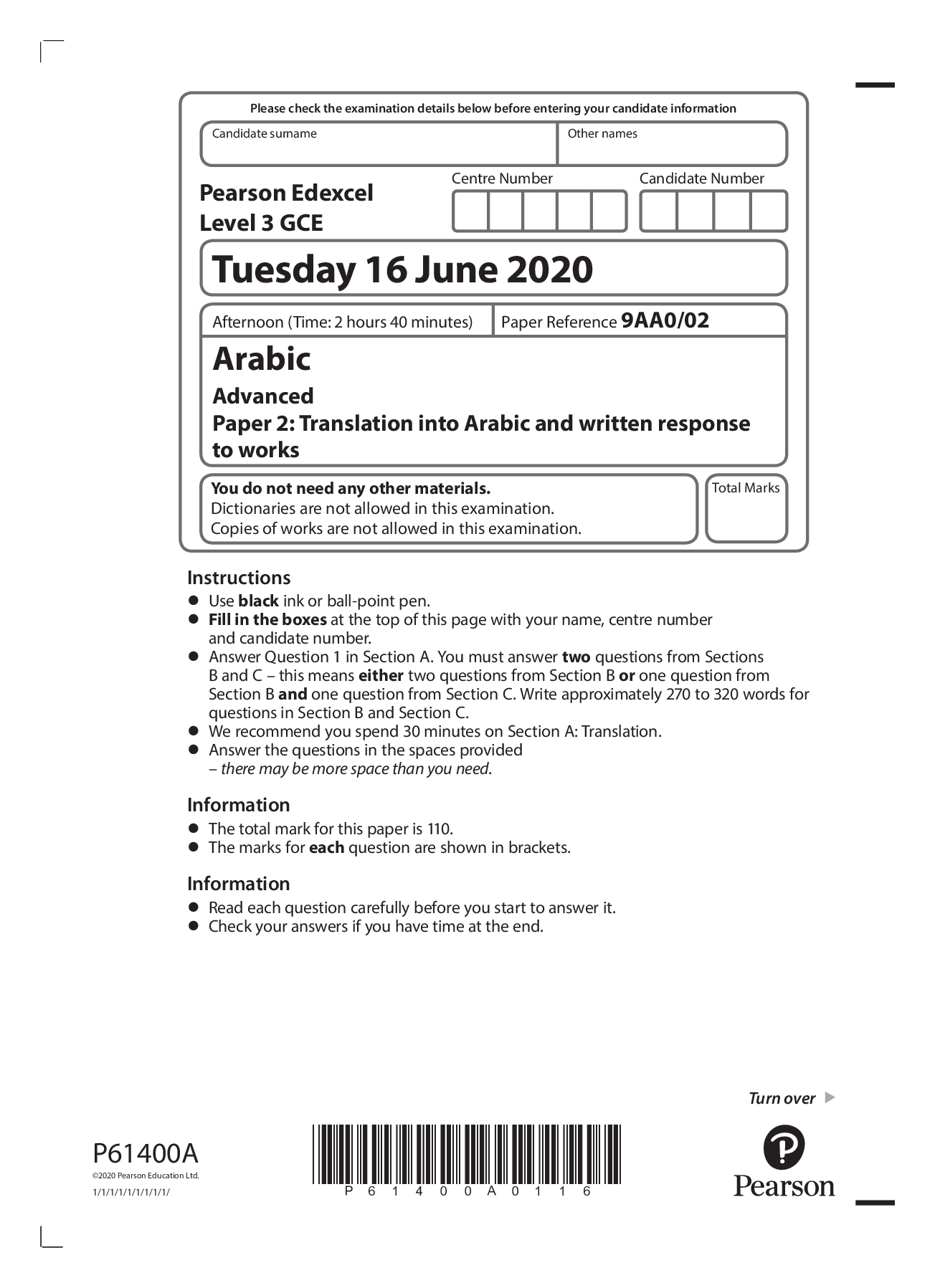
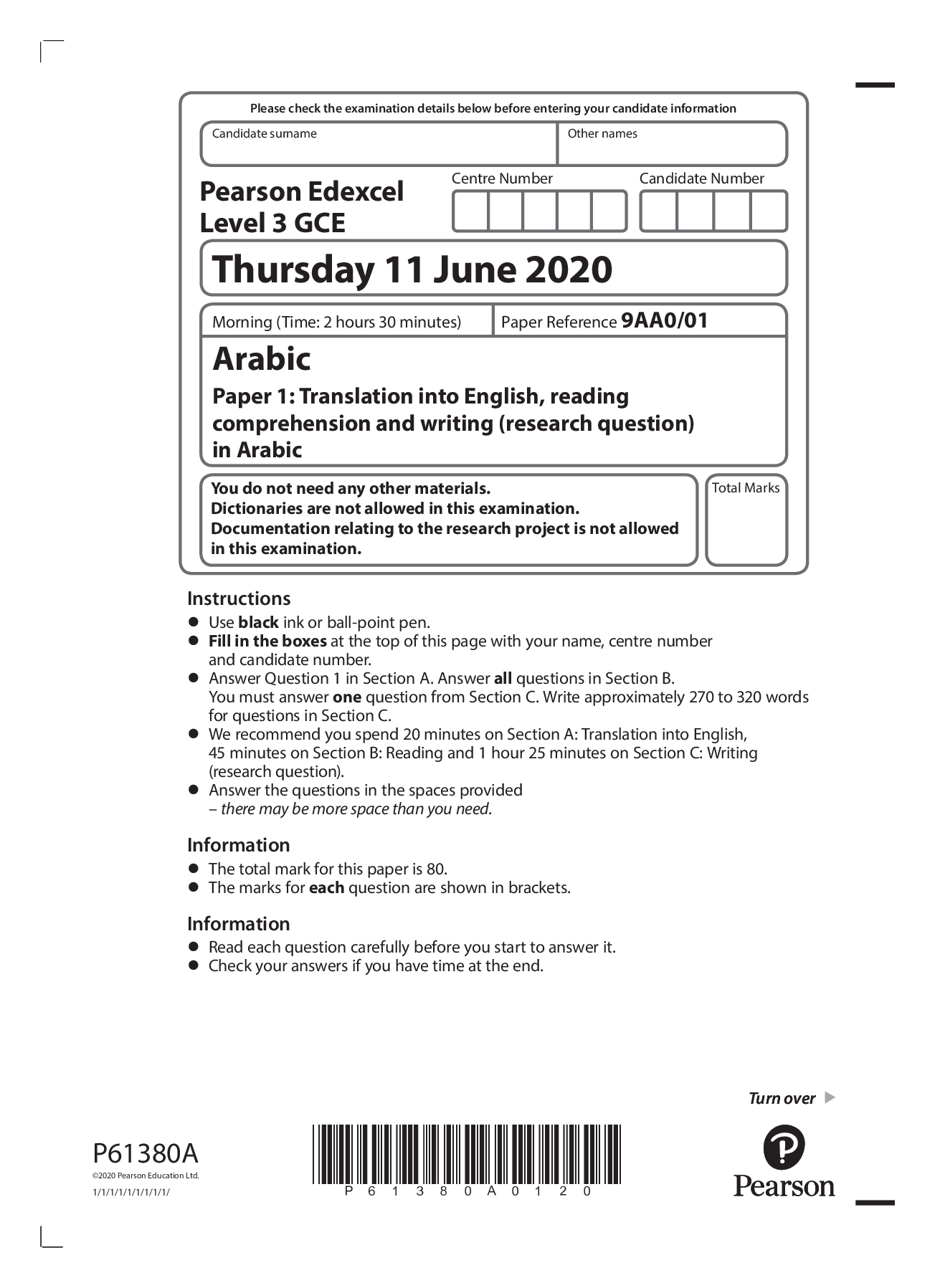
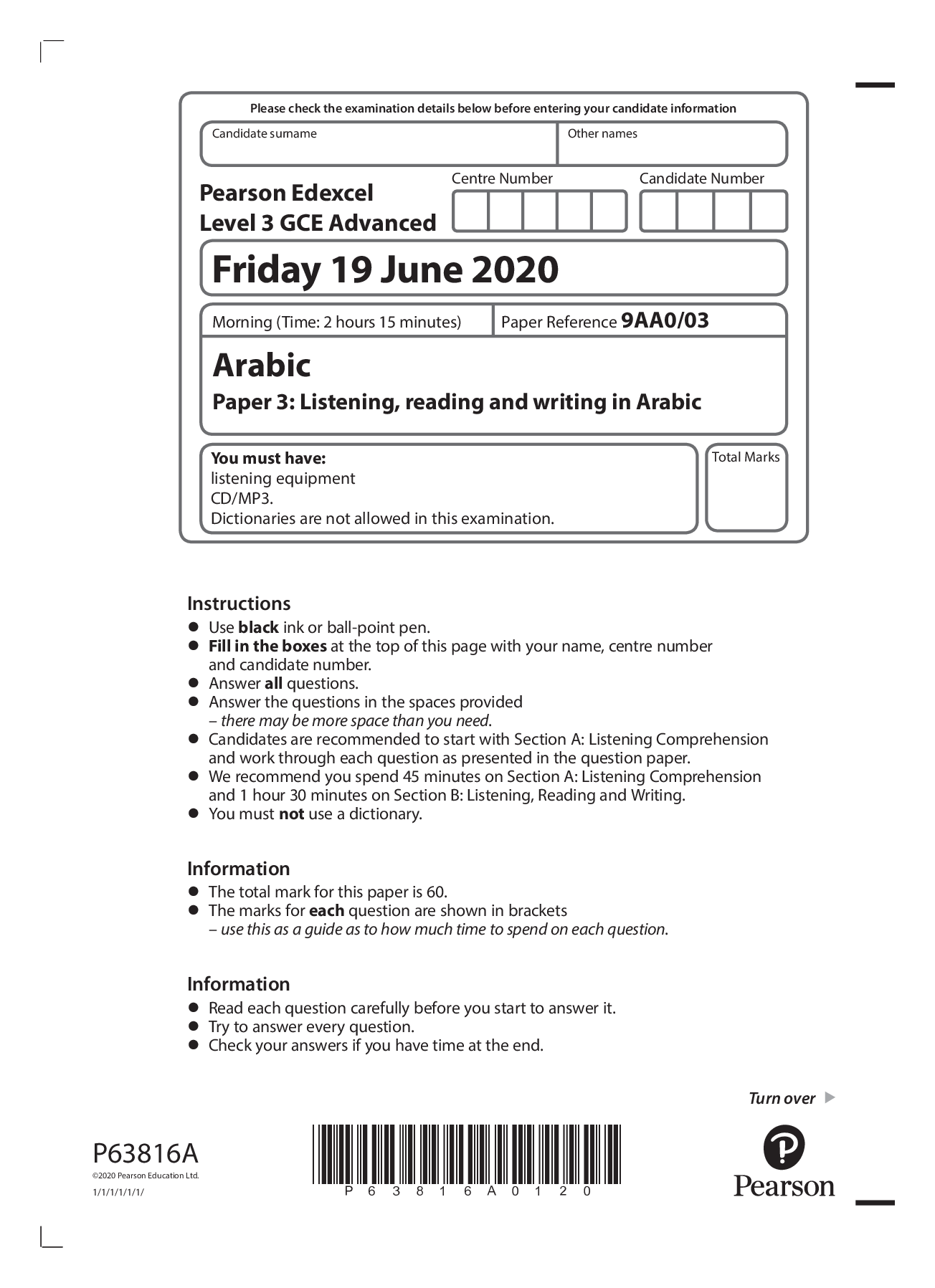

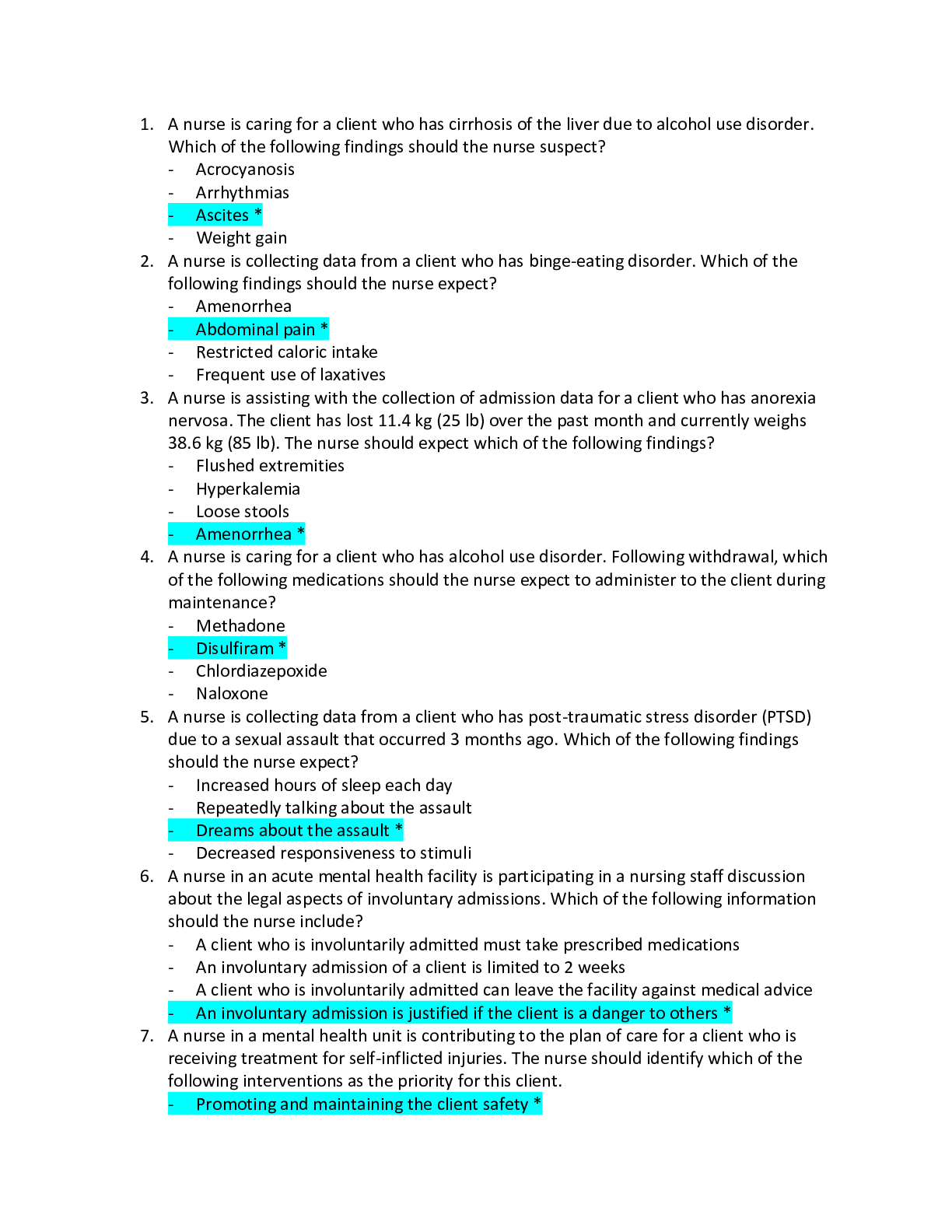
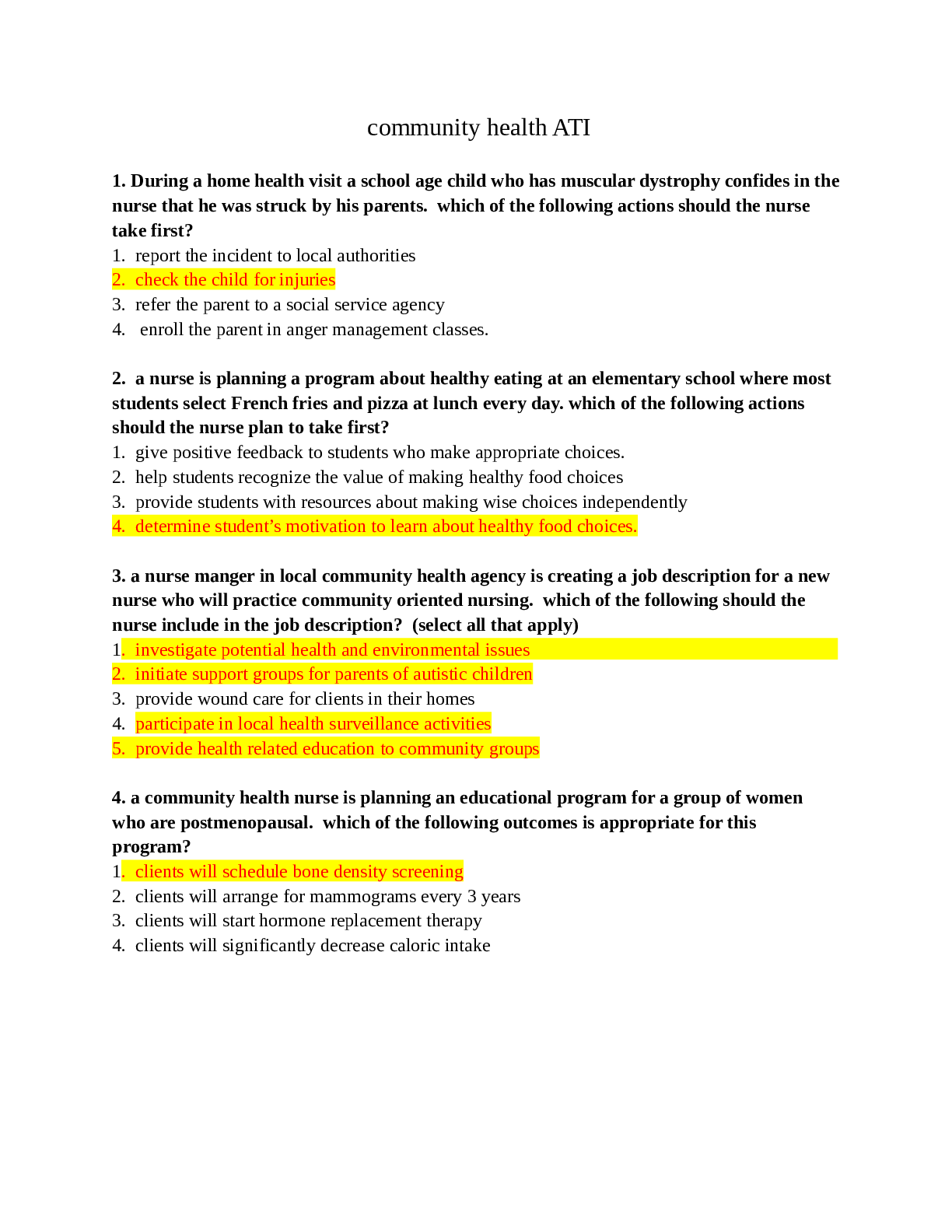
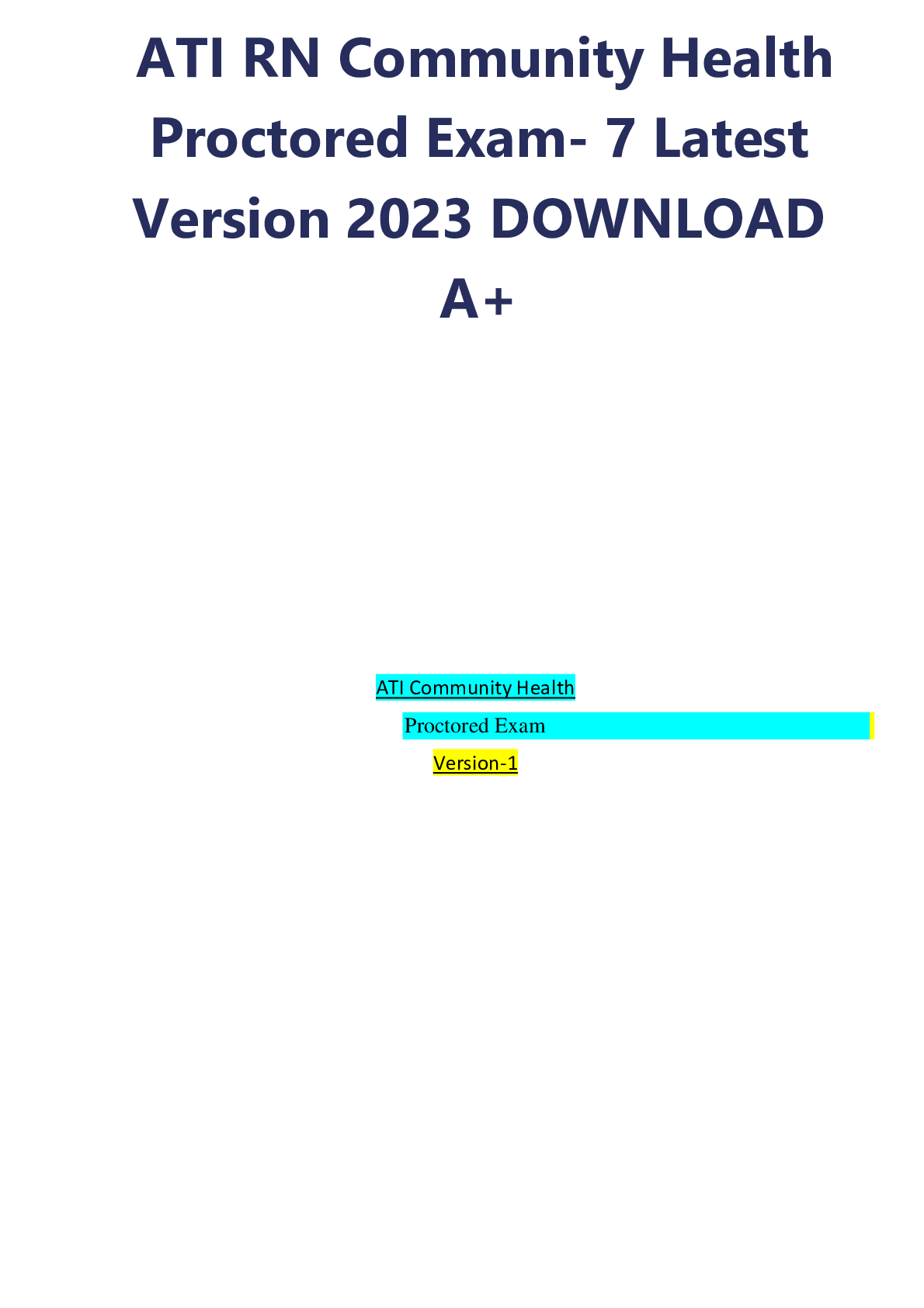


.png)
.png)
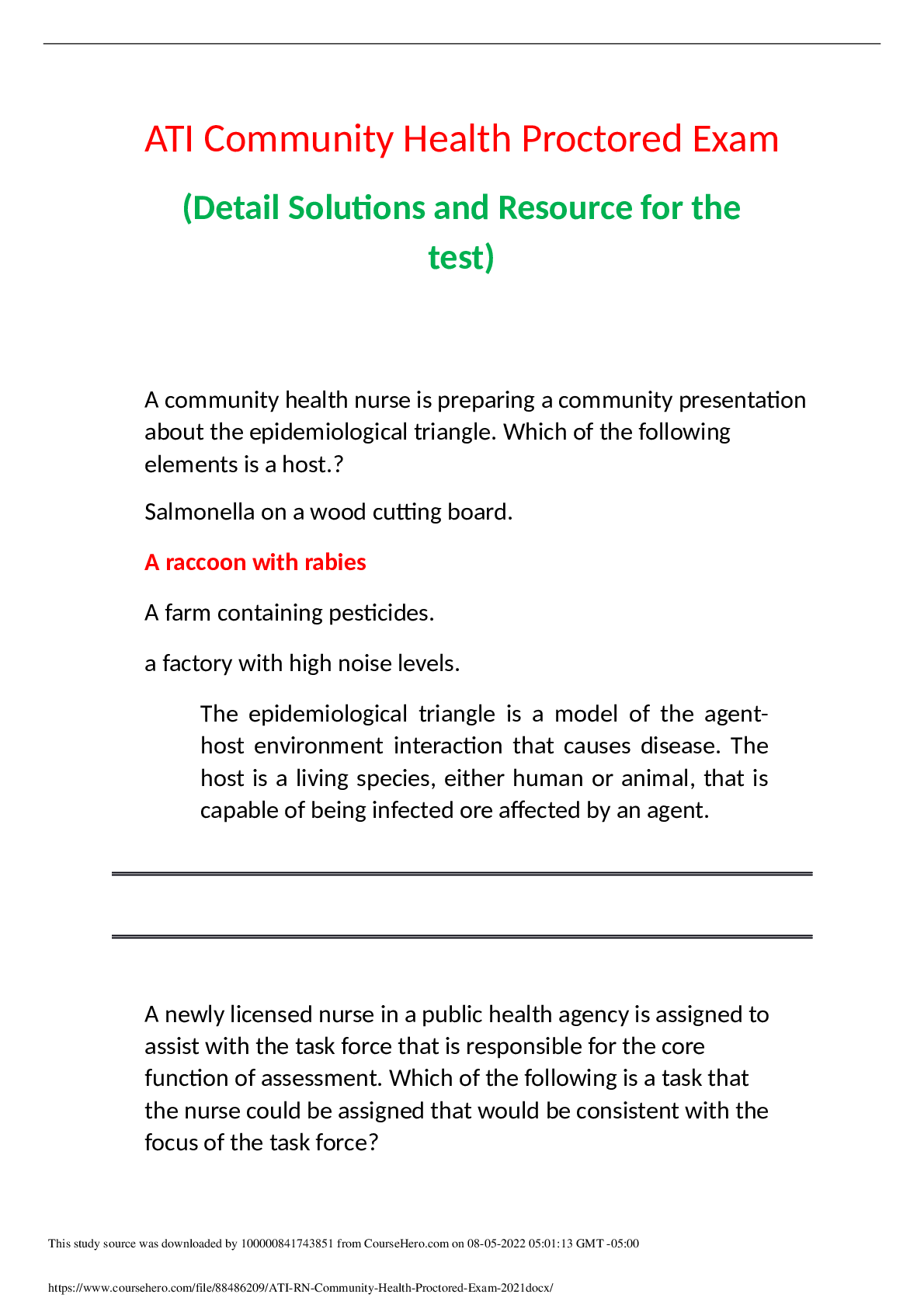
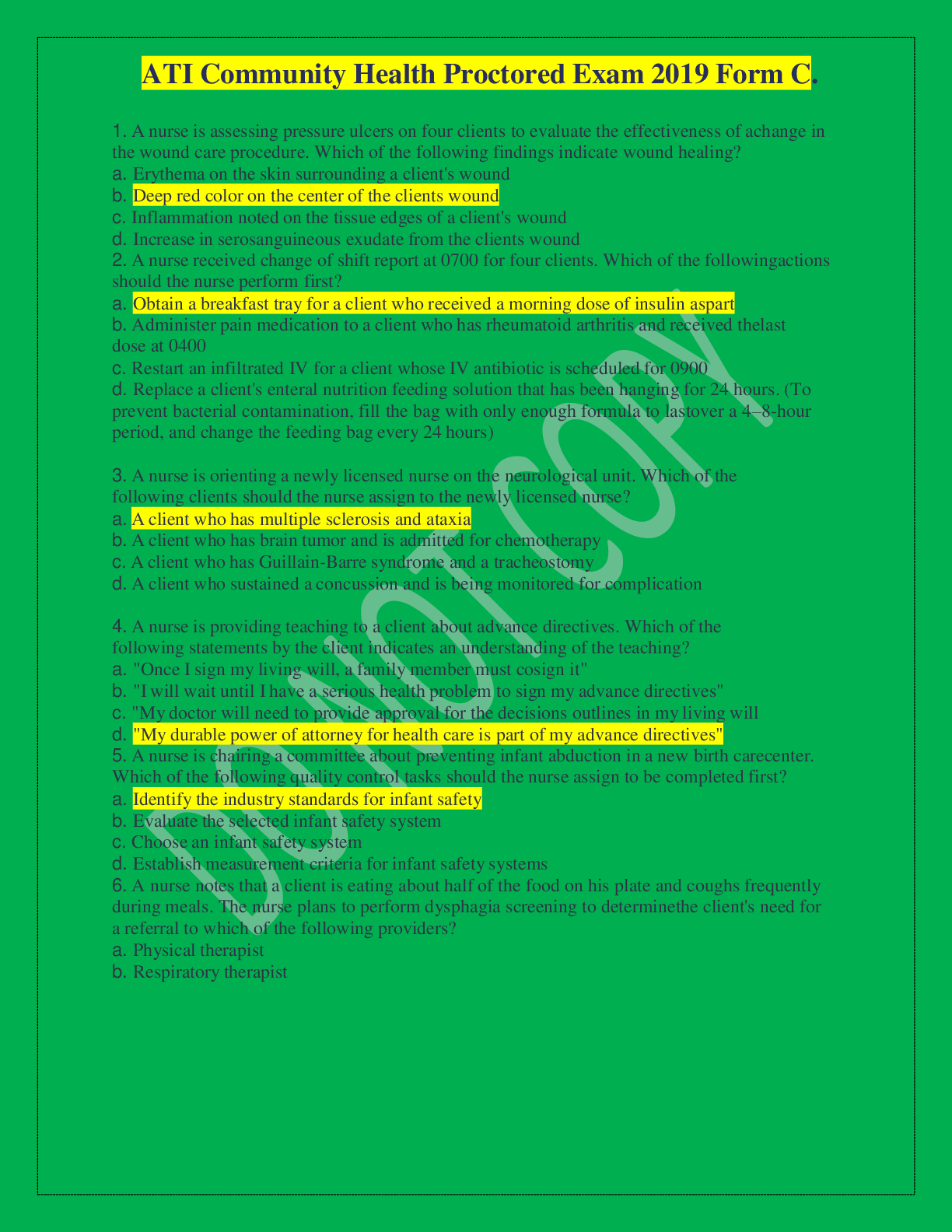
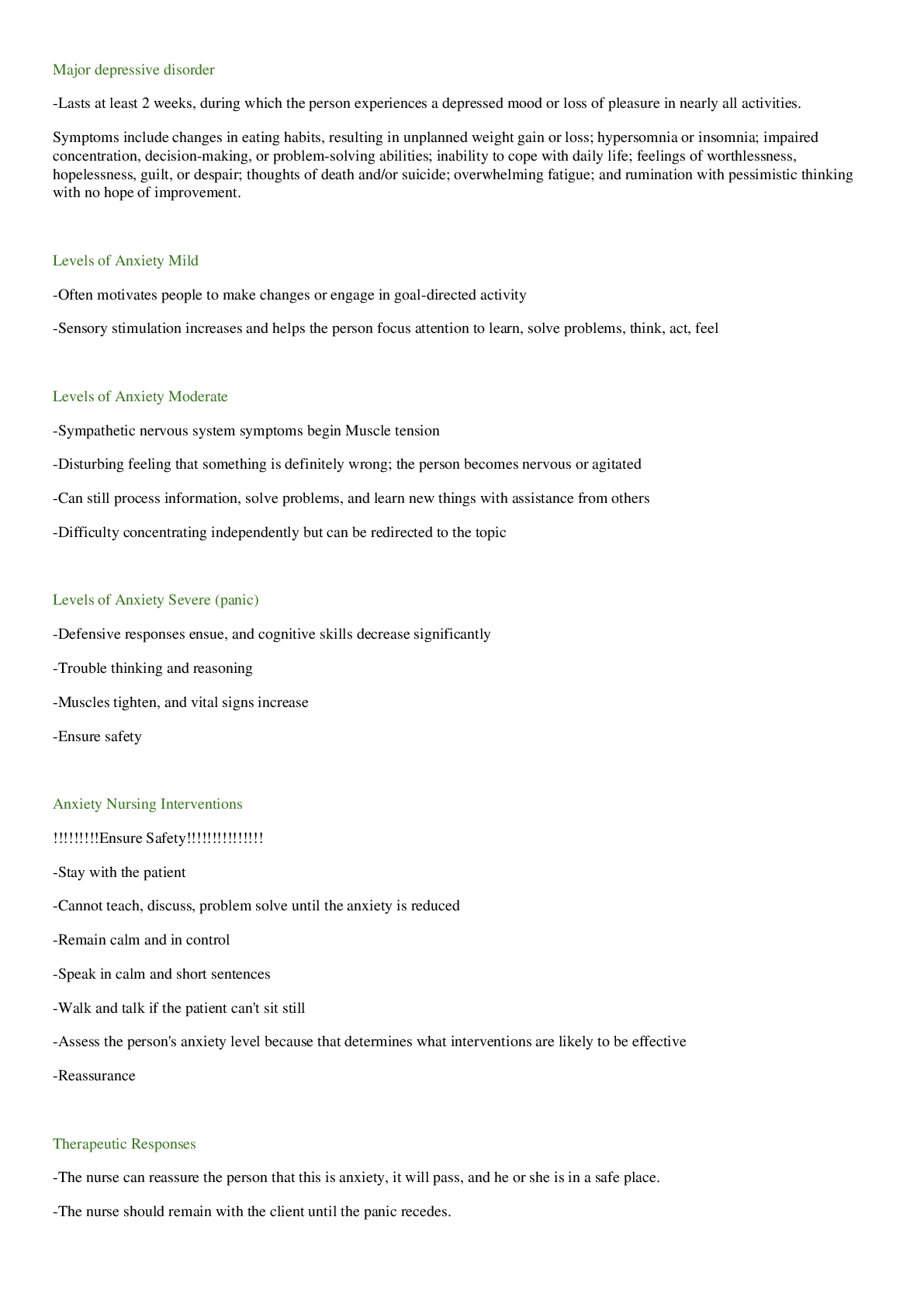
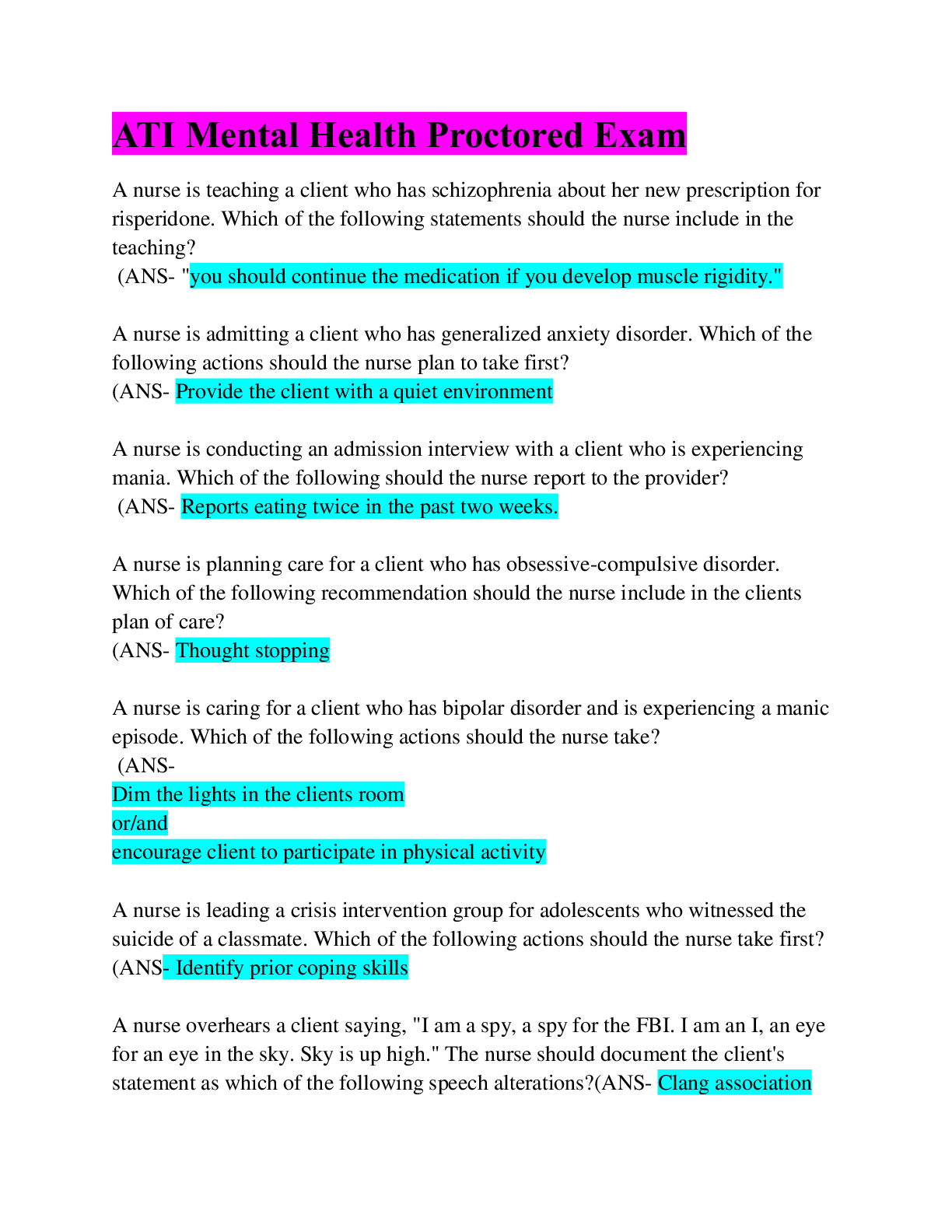

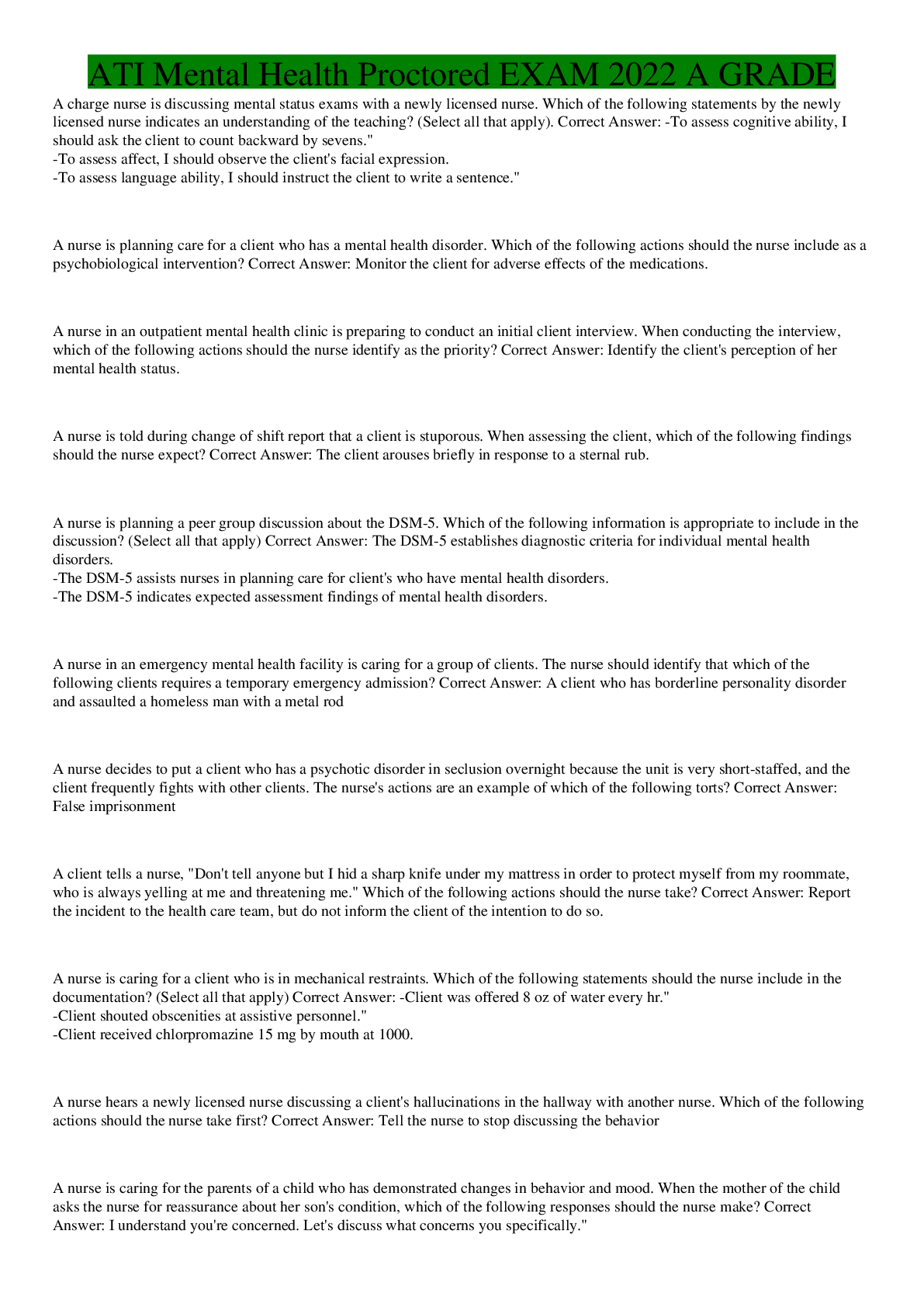
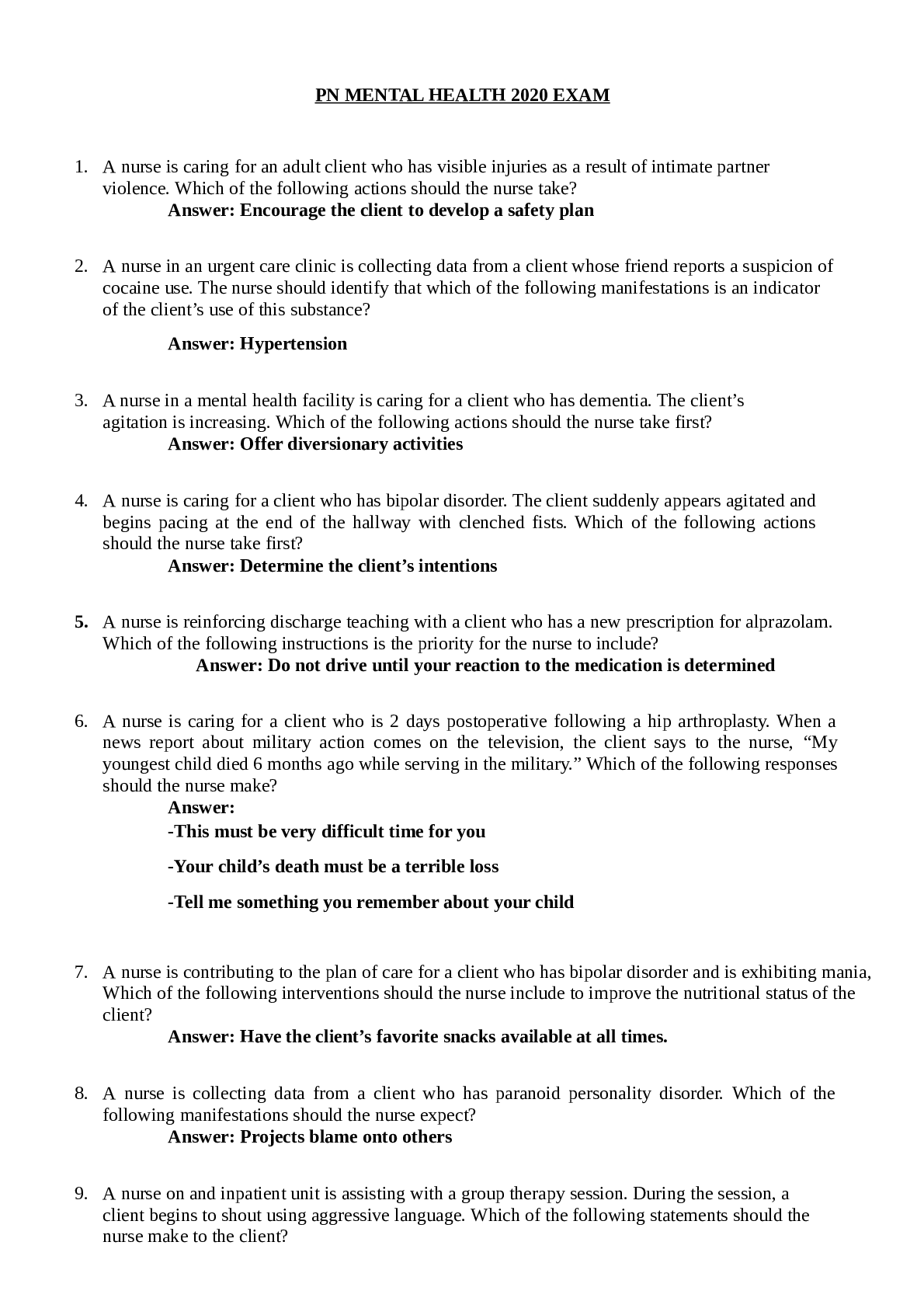
.png)

